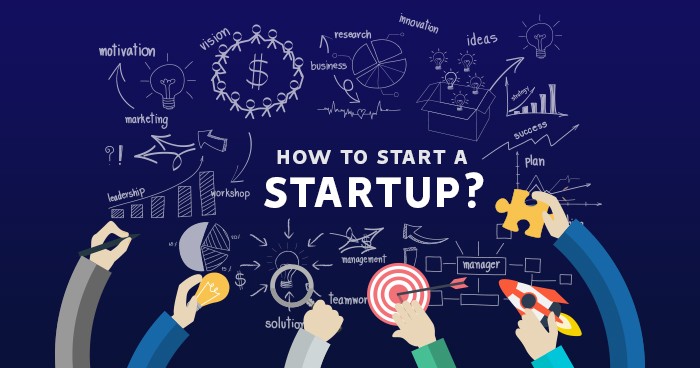In the early stages of launching a startup, one of the most critical decisions you’ll make is choosing the right tech stack. The technology stack you select can significantly impact your startup’s performance, scalability, and long-term success. This blog post will guide you through the process of selecting the perfect tech stack for your startup launch, ensuring that you make informed choices that will set your business up for success.
Hook: A Guide for a Critical Early Decision
Choosing the right tech stack is not just about picking the latest or most popular technologies. It’s about aligning your tech choices with your startup’s goals, resources, and future needs. This guide will help you navigate this crucial decision, providing insights and strategies to ensure you build a robust and scalable foundation for your startup.
Understanding the Tech Stack
A tech stack is a combination of technologies used to build and run an application. It typically consists of the front-end (client-side) and back-end (server-side) components. The front-end includes everything that users interact with directly, such as HTML, CSS, and JavaScript frameworks. The back-end comprises the server, database, and application logic, often involving languages like Python, Ruby, or Node.js, and databases like MySQL or MongoDB.
Step 1: Define Your Startup’s Requirements
Before selecting a tech stack, it’s essential to clearly define your startup’s requirements. This includes understanding the nature of your product, the problems it solves, and the specific needs of your target audience.
Key Considerations:
- Project Scope and Scale: Determine the size and complexity of your project. Are you building a simple MVP (Minimum Viable Product) or a complex application?
- Performance Needs: Consider the performance requirements, such as speed, scalability, and responsiveness.
- User Experience: Define the user experience you want to deliver. This includes design aesthetics, ease of use, and functionality.
- Resource Availability: Assess your team’s skills and experience. Choose technologies that your team is comfortable with or can learn quickly.
Example: If you’re launching a social media platform, you’ll need a tech stack that supports real-time data processing and can scale to handle high traffic volumes.
Step 2: Choose the Right Front-End Technologies
The front-end is crucial as it directly impacts user experience. Choosing the right front-end technologies ensures that your application is responsive, interactive, and visually appealing.
Popular Front-End Technologies:
- HTML, CSS, and JavaScript: The foundational technologies for building web interfaces.
- JavaScript Frameworks: Libraries like React.js, Angular.js, and Vue.js offer powerful tools for building dynamic and responsive user interfaces.
Considerations:
- Performance: Ensure the framework you choose can deliver fast and responsive user experiences.
- Community Support: Opt for frameworks with strong community support and extensive documentation.
- Ease of Use: Consider the learning curve and ease of integration with other technologies.
Example: Airbnb uses React.js for its front-end, benefiting from its modular structure and efficient performance, which enhances user experience.
Step 3: Select the Appropriate Back-End Technologies
The back-end is the backbone of your application, handling business logic, database interactions, and server management. Choosing the right back-end technologies ensures your application is robust, secure, and scalable.
Popular Back-End Technologies:
- Programming Languages: Common choices include Python (Django, Flask), Ruby (Ruby on Rails), Node.js, and Java.
- Databases: Options include relational databases like MySQL and PostgreSQL, and NoSQL databases like MongoDB and Cassandra.
Considerations:
- Scalability: Choose technologies that can scale with your startup’s growth.
- Performance: Ensure the back-end can handle the expected load and deliver fast response times.
- Security: Opt for technologies with robust security features and best practices.
Example: Shopify uses Ruby on Rails for its back-end, leveraging its simplicity and convention-over-configuration philosophy to build a scalable e-commerce platform.
Step 4: Integrate DevOps and Cloud Solutions
DevOps and cloud solutions play a crucial role in modern application development, offering tools for continuous integration, deployment, and infrastructure management.
Popular DevOps and Cloud Solutions:
- CI/CD Tools: Jenkins, GitLab CI, and CircleCI for continuous integration and deployment.
- Cloud Platforms: AWS, Google Cloud, and Microsoft Azure for scalable cloud infrastructure.
Considerations:
- Automation: Implement automation for testing, deployment, and monitoring to streamline development processes.
- Scalability: Choose cloud solutions that offer flexible scaling options to accommodate growth.
- Cost: Consider the cost implications and choose solutions that fit your budget.
Example: Netflix uses AWS for its cloud infrastructure, benefiting from its scalability, reliability, and wide range of services.
Step 5: Evaluate and Iterate
The technology landscape is constantly evolving, so it’s important to regularly evaluate your tech stack and make adjustments as needed. Stay informed about new developments and be open to iterating on your initial choices.
Steps to Evaluate and Iterate:
- Monitor Performance: Continuously monitor application performance and user feedback.
- Stay Updated: Keep abreast of new technologies and industry trends.
- Iterate: Be willing to iterate on your tech stack, incorporating new tools and practices that enhance performance and user experience.
Example: Instagram started with a back-end built on Django but has since evolved its tech stack to include various technologies that support its massive growth and performance needs.
Conclusion
Choosing the perfect tech stack for your startup launch is a critical decision that can influence your long-term success. By defining your requirements, selecting the right front-end and back-end technologies, integrating DevOps and cloud solutions, and continuously evaluating and iterating, you can build a robust, scalable, and future-proof foundation for your startup. Make informed choices, stay adaptable, and position your startup for sustained growth and success.
References:
- Fowler, M. (2018). Refactoring: Improving the Design of Existing Code. Addison-Wesley Professional.
- Newman, S. (2015). Building Microservices: Designing Fine-Grained Systems. O’Reilly Media.
- Ghuloum, M. (2020). Choosing the Right Tech Stack for Your Startup. Startup Grind.
- Kruchten, P. (2003). The Rational Unified Process: An Introduction. Addison-Wesley Professional.
By carefully selecting your tech stack and continuously optimizing it, you can ensure that your startup is well-equipped to meet current demands and adapt to future challenges.
